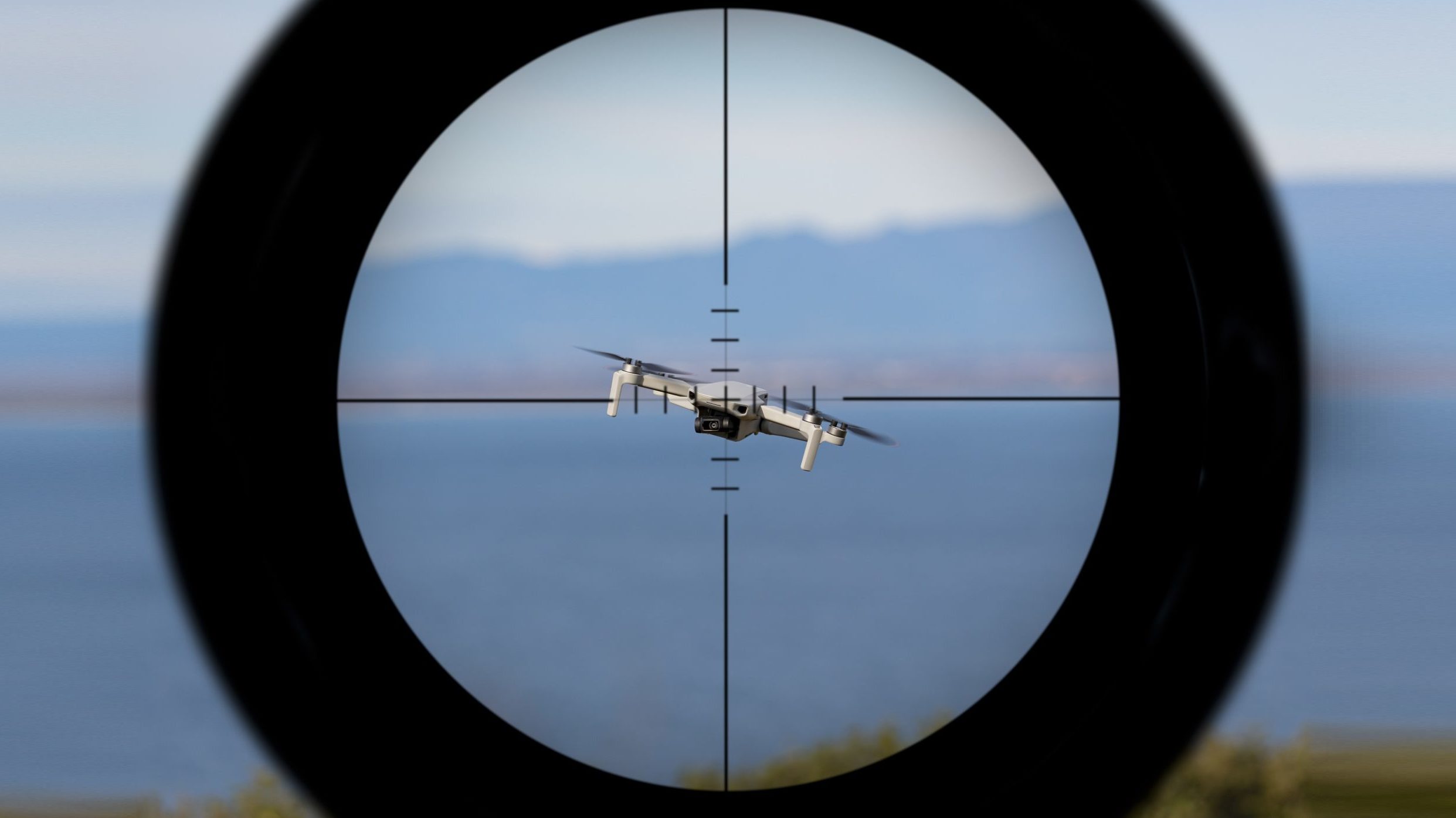How Israel Can Defend Its Airspace Against Drone Attacks
Hizbullah terror group is using small aircraft as a form of psychological warfare against Israel, defense experts say
Drone incursions are a growing concern for the Israeli defense establishment but there are readily available solutions that can counter the threat, experts in the industry believe.
A small drone, which the Israel Defense Forces referred to as a radio-controlled aircraft, entered Israeli airspace from Lebanon on Friday and managed to evade an Iron Dome interceptor missile before returning to Lebanon. The drone incursion set off warning sirens across northern Israel and fighter jets were scrambled to patrol the area.
The Iran-backed Hizbullah terror group claimed responsibility for the incident and said that the “Hassan” model aircraft had flown 40 minutes and reached some 70 kilometers (43 miles) into Israeli territory. However, it was unclear if the drone photographed or recorded any images during its flight.
In response, Israeli Air Force jets were seen flying low over Beirut, according to local media reports.
Friday’s incident is just one of several such drone incursions along Israeli’s northern border in recent weeks. A day earlier, the IDF shot down another drone that was launched into Israeli airspace from the same area. Later that day, it downed yet another drone – this one in the south and dispatched by Hamas in the Gaza Strip.
Itzik Huber, CEO of Skylock Systems, part of the Avnon HLS Group, told The Media Line that Israel is growing increasingly concerned by the prevalence of drone incursions. Small drones like the one seen Friday are difficult to detect.

Itzik Huber, CEO of Skylock Systems, part of the Avnon HLS Group. (Courtesy)
“One drone like that can carry up to 1.5 to 2 kilos of explosives,” Huber said. “It won’t do big damage but it will prove capabilities and embarrass the other side.”
Based in Israel, Skylock Systems specializes in the design and production of technologies for the detection, verification and neutralization of unauthorized drones. The company’s technology has been deployed in 31 countries.
According to Huber, Israel needs to adapt the existing missile defense systems in order to effectively counter drones, rather than relying on expensive Iron Dome interceptors. Because such small aircraft have become so readily available, the issue is only going to get more pressing as time goes by.
Drones require special equipment and special solutions because they are small and normal radar [systems] will not see them; they are not a classic aerial target. You can jam the communications; you can shoot an active drone to attack the other drone. Skylock, along with other Israeli companies, have very good solutions for that problem.
Special systems uniquely geared towards drones are equipped with optical sensors that can identify the type of unmanned aerial vehicle being flown, what kind of payload it is carrying and more.
“Drones require special equipment and special solutions because they are small and normal radar [systems] will not see them; they are not a classic aerial target,” he asserted. “You can jam the communications; you can shoot an active drone to attack the other drone. Skylock, along with other Israeli companies, have very good solutions for that problem.”
Other industry leaders also pointed to the difficulties of detecting and mitigating drone incursions.
Lior Segal, CEO of ThirdEye Systems, said that a laser defense system like the one the IDF is currently developing could be a good way to defend against a small drone, but noted that the technology is still a few years away from practical applications. For this reason, he believes the IDF should resort to more traditional anti-aircraft methods.

Lior Segal, CEO at Third Eye Systems. (Yakir Shukrun)
“The fact that it’s flying slowly makes it excellent shooting practice for ground units,” Segal told The Media Line. “I think maybe going back technology-wise in the short term is the sort of solution that they should seek. Using such optical systems like [the one] we have would actually provide these units with the flexibility locally to give the right sort of answer locally.”
I think maybe going back technology-wise in the short term is the sort of solution that they should seek. Using such optical systems like [the one] we have would actually provide these units with the flexibility locally to give the right sort of answer locally.
ThirdEye Systems specializes in AI-powered object recognition algorithms and its products are currently being used by the Israel Defense Forces as well as other leading defense bodies around the world. Its electro-optical detection system is used mainly against small drones.
Like Huber, Segal pointed to jamming the aircraft’s frequencies as a possible solution in addition.
“It’s more of a psychological weapon,” Segal said. “The fact that there were alarms in the north is always something that plays into [Hizbullah’s] hands. On the other hand, it does have a real advantage in terms of reconnaissance.
“Nobody wants to see a drone flying above their house every day that’s being operated by a terror organization,” he said.


